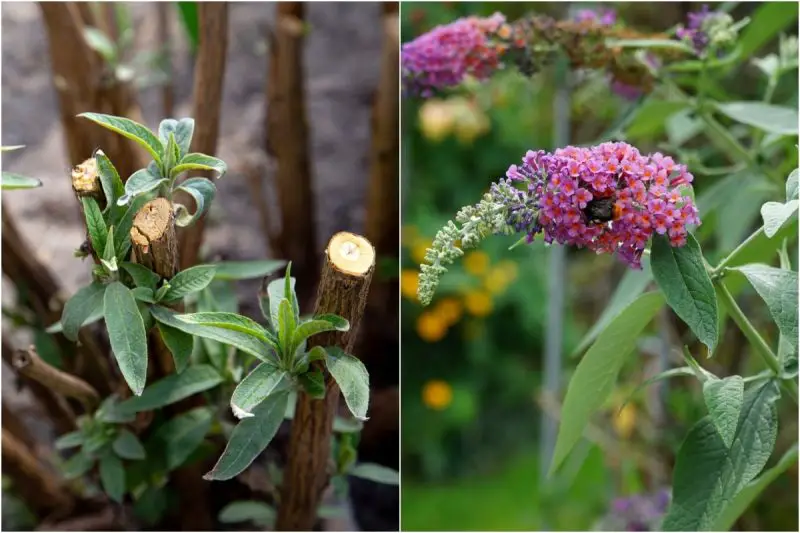Butterfly bush, also known as Buddleja davidii, is a fast-growing, flowering shrub celebrated for its fragrant blossoms and its ability to attract pollinators, especially butterflies. As beautiful as it is, this vigorous plant can quickly become unruly if not regularly maintained. Proper pruning not only keeps the butterfly bush looking its best but also plays a critical role in enhancing flower production. Understanding the right pruning technique can transform your plant from a tangled mass into a blooming focal point of the garden.
Many gardeners underestimate the power of strategic pruning. By removing old or damaged growth and encouraging new shoots, you stimulate the plant’s energy to focus on flower-bearing branches. This balance between form and function is essential for sustaining year-round health and seasonal brilliance. Whether you’re tending to an established butterfly bush or working with a young plant, this guide will help you prune with precision to achieve maximum floral impact.
In this comprehensive article, we’ll explore the best time to prune butterfly bush, how different pruning methods affect flowering, and common mistakes that can hinder blooming. By the end, you’ll feel confident shaping your butterfly bush into a vigorous, flowering masterpiece season after season.
Understanding the Growth Habit of Butterfly Bush

Before making the first cut, it’s crucial to understand how butterfly bushes grow and respond to pruning. These shrubs are considered deciduous in many climates, especially in zones with cold winters. They typically die back to the ground during winter in USDA zones 5 through 6 but regrow rapidly in spring from the base. In warmer zones, such as zones 7 through 10, butterfly bushes may retain some woody growth year-round.
The majority of blooms on a butterfly bush appear on new wood. This means the current season’s growth is what produces flowers, not the older, established branches. This growth behavior is important because it informs the pruning strategy: the more vigorous new shoots you encourage, the more flowers you will enjoy in summer and early fall. Cutting back the plant in early spring promotes strong new canes that will develop abundant blossoms.
Understanding the rhythm of your local climate is equally important. In colder zones, waiting until the last frost has passed before pruning ensures that you don’t accidentally cut back tissue that may have offered some cold protection. In warmer areas, light winter pruning can be used for shaping, while heavier pruning is reserved for late winter or early spring.
When Is the Best Time to Prune Butterfly Bush
Timing is everything when it comes to pruning for more flowers. The optimal time to prune butterfly bush is in late winter or early spring, just as new buds begin to swell and before fresh growth takes off. This window provides the plant with an opportunity to redirect its stored energy into strong, new branches that will soon burst with blooms.
Avoid pruning butterfly bush in the fall, even if the plant appears overgrown or messy. Cutting it back too late in the season can encourage tender new growth that is highly susceptible to winter damage. Instead, wait until the dormant season passes and your local temperatures begin to rise consistently. You’ll notice that the plant will start pushing out tiny green buds along the base or lower branches — this is your cue that it’s safe to begin pruning.
In mild climates, some gardeners may perform a lighter trim in late fall for cosmetic purposes. However, any heavy pruning should be reserved for spring. By aligning your pruning schedule with the plant’s natural growth cycle, you ensure that every cut contributes to a more prolific blooming season.
Tools You’ll Need for Effective Pruning
Selecting the right tools can make a significant difference in your pruning results. Sharp, clean hand pruners are essential for cutting small stems and branches. For larger, woody stems, long-handled loppers may be needed to make clean cuts without crushing the tissue. In some cases, particularly with older or neglected butterfly bushes, a pruning saw may be required to remove thick, gnarled branches.
Sanitizing your tools before pruning is important to prevent the spread of plant diseases. Wiping the blades with rubbing alcohol or a solution of bleach and water between uses helps protect your plant from infection. Additionally, using gloves and safety goggles protects you while working with thick or brittle branches that can splinter during cutting.
Having all your tools ready beforehand allows you to focus on shaping the plant without interruption. With the right equipment in hand, you’ll be better prepared to perform clean, purposeful cuts that support healthy regrowth and abundant flowering.
How to Identify What to Prune
When approaching your butterfly bush, the goal is to create a framework that supports new, flower-producing growth. Begin by identifying and removing any dead, diseased, or damaged wood. These branches often appear brittle, gray, or hollow and can be snapped easily. Removing this material improves air circulation and reduces the risk of pests and fungal diseases.
Next, look for old woody canes that no longer produce vigorous shoots. These thick stems tend to grow from the base and crowd the center of the plant. Cutting them down near ground level opens up the interior of the bush, allowing more sunlight and airflow to reach emerging shoots. Focus on keeping several of the strongest young canes, which will form the foundation for that season’s flowering display.
Encourage symmetry and balance by trimming stems that lean excessively or cross through the center of the shrub. This shaping improves the plant’s overall appearance and prevents it from becoming tangled or leggy. The goal is to leave a structure of healthy, evenly spaced canes that can support lush, flower-laden branches.
How Much Should You Cut Back
Knowing how much to prune butterfly bush depends on the plant’s age, size, and condition. For mature, well-established shrubs, cutting back the entire plant to about 12 to 24 inches above ground level in early spring is often recommended. This hard pruning stimulates the plant to produce strong new stems that will flower generously throughout the season.
Younger plants or those in cooler regions may not require such an aggressive cut. In these cases, leaving a bit more height—around 24 to 36 inches—can provide protection and stability. What matters most is that you encourage growth from the base while removing old or weak wood that contributes little to the plant’s flowering performance.
If your butterfly bush has been neglected for a few years and is overgrown or woody, rejuvenation pruning may be necessary. This involves cutting back the entire plant severely, sometimes to as low as 6 inches above ground. Though this may seem drastic, butterfly bush responds well and often rebounds with even greater vigor and blooming power.
Shaping Your Butterfly Bush for Better Blooms
Proper shaping plays a key role in encouraging flower production. After your initial pruning in early spring, monitor the plant’s growth throughout the season and perform light shaping as needed. Pinching or trimming back the tips of new shoots in early summer can promote branching, leading to more flower clusters.
Maintaining a balanced shape prevents the plant from becoming top-heavy or lopsided. While butterfly bushes are known for their arching, fountain-like form, strategic shaping helps channel their energy into producing more flowers along each branch. Avoid cutting back too heavily in summer, as this can reduce late-season blooms.
Shaping also includes controlling the overall size of the plant. Butterfly bushes can quickly grow tall and wide, sometimes overwhelming small garden spaces. Periodic shaping helps keep the plant compact, more floriferous, and better integrated into your garden design.
Deadheading Spent Flowers to Extend Blooming
One of the most effective ways to keep butterfly bush blooming longer is by deadheading spent flowers. Once a flower cluster begins to fade and dry out, the plant shifts energy away from blooming and into seed production. Removing these spent blossoms redirects that energy back into forming new flower buds.
Deadheading can be done throughout the blooming season. Use clean pruners to snip off faded flower spikes just above the next set of leaves or a lateral bud. This technique encourages the development of secondary flower shoots, leading to a longer display of color and fragrance.
While some modern cultivars of butterfly bush are sterile and do not produce seeds, deadheading still offers benefits. It improves the plant’s appearance, encourages continued flowering, and reduces the risk of invasive spreading in certain regions. Regular deadheading becomes a valuable part of your maintenance routine for vibrant blooms well into fall.
Common Pruning Mistakes and How to Avoid Them
Even with the best intentions, gardeners sometimes make pruning mistakes that limit the butterfly bush’s performance. One common error is pruning at the wrong time. Cutting back too early in winter or too late in fall can result in frost damage or poor regrowth. Waiting until early spring ensures better timing for strong flowering.
Another mistake is removing too little or too much wood. Light pruning may leave behind too much old growth, which produces fewer flowers. On the other hand, excessively harsh pruning, especially during the growing season, can weaken the plant and reduce blooming. A balanced approach based on the plant’s age and condition works best.
Failure to disinfect tools can also spread disease between cuts or from one plant to another. Always clean your pruners and saws to prevent introducing pathogens. Finally, ignoring deadheading or shaping throughout the summer can lead to a messy, overgrown bush with fewer blossoms. Pruning is not a one-time task — it’s an ongoing conversation with your plant.
Regional Considerations for Pruning Butterfly Bush
Regional climate plays a significant role in how and when you prune your butterfly bush. In colder zones such as USDA 5 through 6, butterfly bushes often die back completely. These regions benefit from pruning down to the ground in spring, as the top growth is unlikely to survive harsh winters.
In temperate zones like USDA 7 through 9, plants may retain some top growth. Here, gardeners may choose to cut back to 12 to 18 inches above ground. The plant’s response depends on how much of the woody structure remains viable. Monitoring for bud swell and cutting just above visible buds helps protect regrowth.
In subtropical zones or frost-free areas, butterfly bushes may remain semi-evergreen. In these locations, pruning becomes more about shaping and rejuvenation rather than cold recovery. Regular trims and thinning keep the plant full of fresh growth and ensure consistent blooming throughout the long growing season.
Why Pruning Boosts Flower Production
Pruning affects flower production in multiple ways. By removing old or exhausted growth, the plant reallocates resources to the most vigorous stems. These newer shoots are more likely to bear large flower clusters. Additionally, pruning opens the plant’s structure, improving airflow and sun exposure — two conditions that stimulate healthy buds.
The plant’s energy naturally flows to areas with the most growth potential. Without pruning, butterfly bushes can become woody and sparse, with fewer blooming points. Strategic cuts focus the plant’s internal systems on blooming rather than supporting dead or dormant tissue. Over time, this leads to a bush that not only looks better but flowers more prolifically.
Consistent annual pruning also extends the productive lifespan of your butterfly bush. Plants that are pruned regularly tend to live longer, bloom more vigorously, and maintain better structure. In this way, pruning becomes both a corrective and a preventative measure in your overall gardening strategy.
FAQ about How to Prune Butterfly Bush
When is the best time to prune a butterfly bush?
The best time to prune a butterfly bush is in late winter to early spring, just before new growth begins. This timing allows the plant to channel its energy into fresh shoots that will produce flowers during the growing season. Avoid pruning in the fall, as this can lead to frost-damaged growth and reduced blooms.
How much should I cut back my butterfly bush?
Most butterfly bushes benefit from being cut back to 12 to 24 inches above the ground in early spring. This hard pruning encourages vigorous new growth and abundant flowering. For younger or less woody plants, leaving a bit more height may be sufficient to maintain structure while still promoting blooms.
Can I prune butterfly bush in the summer?
You can perform light shaping or deadheading during the summer, but avoid heavy pruning during the active growing season. Severe cuts in summer can stress the plant and reduce flower production. Instead, focus on removing spent blooms to extend the flowering period and keep the bush tidy.
What happens if I don’t prune my butterfly bush?
If you skip pruning, butterfly bush can become woody, leggy, and less productive in terms of flowers. The plant may also grow too large and crowd surrounding plants. Without regular pruning, air circulation may decrease, increasing the risk of pests and diseases. Pruning helps keep the plant healthy, compact, and blooming profusely.
Should I deadhead butterfly bush flowers?
Yes, deadheading spent flowers throughout the blooming season encourages the plant to produce more blooms. Removing faded flower spikes prevents seed development and redirects the plant’s energy toward new buds. This practice extends the bloom time and keeps your butterfly bush looking fresh and colorful.
Conclusion
Mastering the art of pruning butterfly bush is essential for any gardener looking to maximize flower production and maintain a vibrant, healthy landscape. By understanding the growth habits of the plant, timing your pruning correctly, and making thoughtful, well-placed cuts, you unlock the full blooming potential of this beloved shrub. Whether you’re reviving an old plant or shaping a young one, your efforts will be rewarded with cascades of colorful blooms and a garden full of fluttering visitors.






